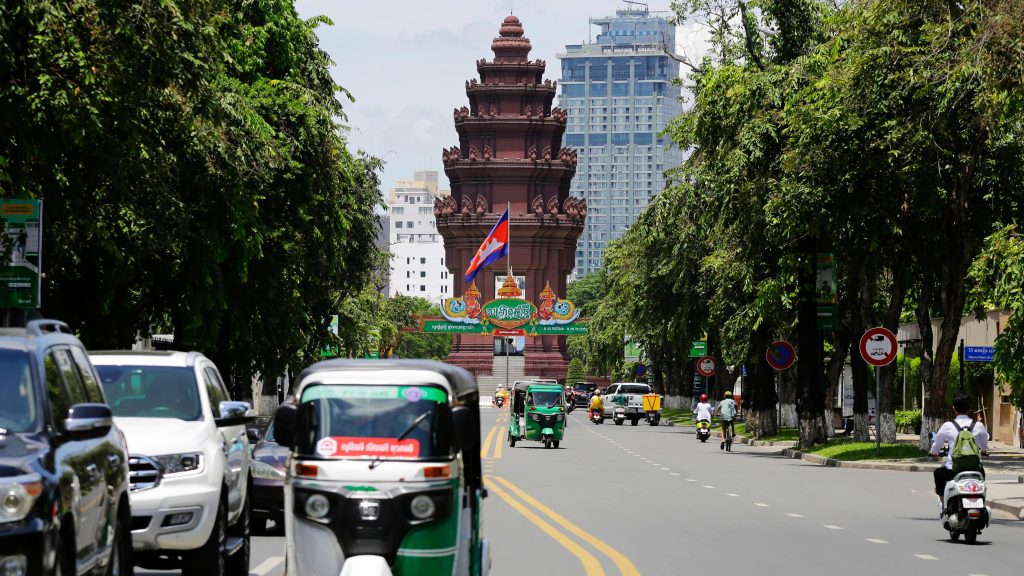
Image: Nelson Antoine / Shutterstock.com
Cambodia’s economy had been growing remarkably in the last decade before coming to a sudden stop due to the COVID-19 pandemic. While Cambodia is now on a good recovery path, some indicators suggest long-term external vulnerability.
Large current account deficits
Since 2019, Cambodia’s current account deficit has widened markedly, from below 10 percent of GDP to an unprecedented 45.7 percent in 2021. Although narrowing, the deficit is estimated to remain high at above 30 percent in 2022, mainly due to persistent demand for imported goods, amplified by substantial gold imports, and lower service income resulting from lower remittances, and the slow recovery of tourism.
Gold trade has played a huge part in the increased volatility of the recent trade balance, as reflected in the significant narrowing of the trade deficit in 2020 due to gold exports, followed by the historically large deficit in 2021 due to gold imports. Large gold imports continue to distort the external accounts in 2022.
Various reasons have been provided for these developments. One reason is speculative investments as gold prices increased significantly in 2020 but fell in 2021. (Traditionally, gold is a popular investment and savings vehicle for Cambodians.) Another reason is the improved ability to capture official gold trading data due to stricter border controls during the pandemic. However, mirror data from major trading partners had already shown large volumes of gold trading to and from Cambodia prior to 2020.
A slow build-up of external vulnerability
Although current account deficits are not necessarily bad for developing countries, the exceptionally large current account deficits are a potential source of external vulnerability, especially if they are financed by short-term capital inflows. Although the bulk of the current account deficits were financed by long-term flows such as FDIs, short-term capital inflows from external private debt and banks’ non-resident deposits, have grown in the past five years.
A shock that could reverse these flows may affect liquidity, confidence and growth. Such a shock, though unlikely in the near term, could also lead to a drawdown of foreign currency reserves. Another key challenge is a potential slowdown in FDI inflows. In the past, strong FDI inflows ensured the overall balance of payments was in surplus and this allowed a build-up in foreign reserves.
What could trigger such a shock?
An emerging risk is the rapid increase in outstanding debt. The country’s credit-to-GDP ratio stood at 177 percent, one of the highest in the ASEAN+3 region, which has raised concerns of financial distress in some segments of the economy, such as real estate and shadow-banking sectors.
Strengthening macro and financial policy management
To safeguard the economy from a financial crisis, multi-faceted policy efforts are needed.
First, Cambodia’s financial supervisory framework and capacity needs to be strengthened further. The central bank has been closely monitoring credit growth and ensuring banks and microfinance institutions have adequate capital and liquidity. The setting up of the Non-Bank Financial Services Authority (NBFSA) by the government is a good step toward better regulation and supervision of shadow banking. Deepening of financial markets is also needed to enable the economy to be more resilient to external and domestic shocks.
As a relatively new institution, the NBFSA needs to significantly enhance its capacity to carry out the responsibilities under its mandate. Better cooperation between the NBFSA, the Credit Bureau of Cambodia, and the National Bank of Cambodia will lead to holistic surveillance and improved analytics for the financial sector, with a view toward expanding coverage to all types of financing, including loans from real estate developers.
Second, more timely and transparent reporting of capital flows would help make monitoring and assessment of risk more accurate and useful for policy formulation.
The volatile trade in gold has played an outsized role in recent movements in Cambodia’s external position. For instance, in 2021 there was a more than 500 percent increase in non-monetary gold imports. Appropriate adjustments are needed in trade data to allow for a proper assessment of Cambodia’s economic developments during 2019-2021. Reflecting the underlying trade performance, Cambodia’s current account deficit, excluding gold, stood at 24 percent of GDP in 2021. But with gold included, it shoots up to 45.7 percent.
Third, in the longer term, the steady development of the export sector could also resolve structural vulnerabilities. Strategically targeting the export sector through policy reforms to increase the attractiveness of export-oriented Qualified Investment Project (QIP) is a welcome move. Attracting more FDI to export-oriented manufacturing will help generate export earnings and build up foreign assets as counterpart to the foreign liabilities that have been built up in the financial account. Meanwhile, policy incentives for domestic oriented FDI could be more targeted toward attracting companies that provide technology, skill or knowledge that allows the long-term growth potential of the economy to be enhanced.
As Cambodia’s economy develops and matures, more efforts must be made to support domestic suppliers that feed into manufacturing, and for manufacturing to diversify and move up the global production value chain. These efforts will allow Cambodia to diversify its economy and build greater resilience.
